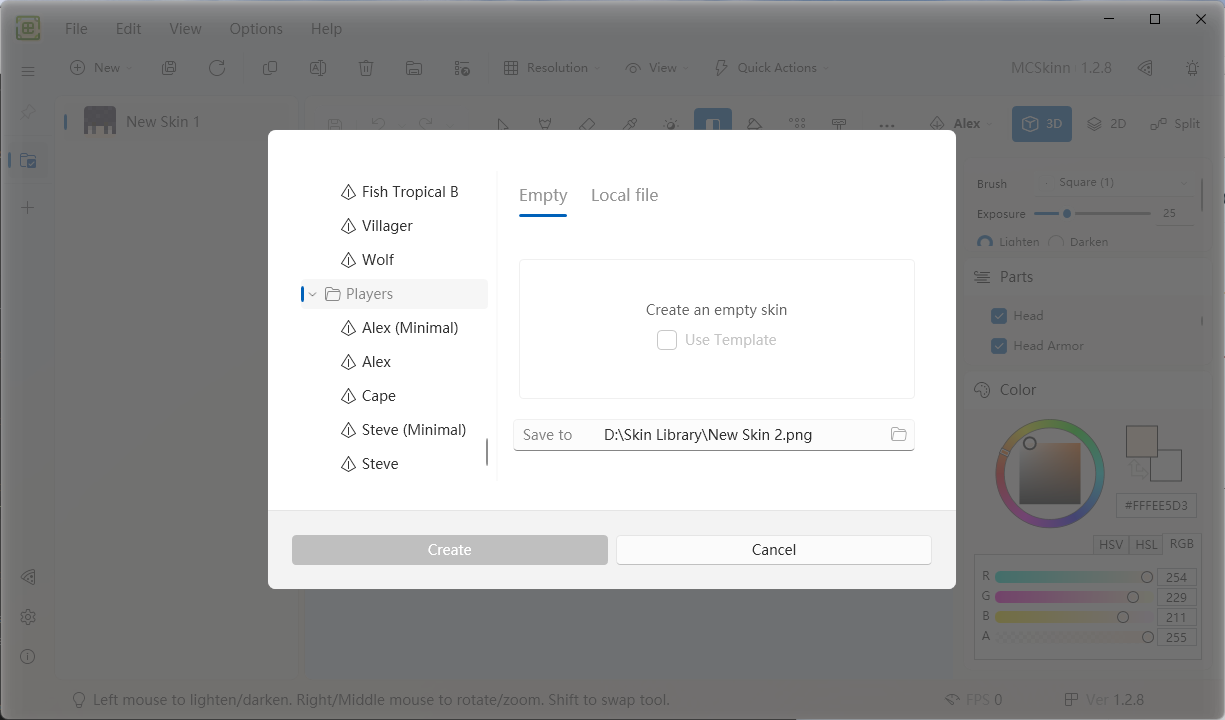Drawing Limbs
Before You Begin
Before you start drawing the arms, it's essential to consider the type of skin you have.
Since Minecraft 1.8, skins have been divided into two types: Alex and Steve, with further subdivisions into single-layer/double-layer skins. However, since single-layer skins are almost no longer used, they won't be discussed here. Just pay attention to whether your skin has the "(Minimal)" suffix.

Skin style selection dialog in MCSkinn (Classic)
The fundamental difference between Alex and Steve styles is that Alex style has arms 1px narrower than Steve. Although these two styles may seem gendered based on their names, they can be applied to all skins.
Moreover, since the Alex style better fits the slim arms and legs of modern people, it is generally recommended to base your drawings on the Alex style.
Getting Started
Arms
The arms can generally be drawn based on the clothing style of the skin's main body. Since the drawable part of the arms is relatively small (only 3-4 pixels wide), it's essential to keep the design of the clothing and shading as simple as possible.
Start by filling in the base color of the skin. Then, according to the clothing style of the body, use the Pen tool to draw the main color that matches it on the upper part.
Use the Burn/Dodge tool to draw shadows. The drawing of the main part is the same as mentioned earlier, but the part near the body and arm skin should be slightly darker to distinguish the arms from the body. However, the contrast in skin tone doesn't need to be as deep; it can be slightly lighter. Then refine and add highlights.
Similarly to before, the side view is brought over from the front view, but the middle part is darker than the edges to represent wrinkles.
Refine and finish, paying attention to the sleeve cuff and skin shadow.
The other two sides can be drawn using the same method or by copying/pasting.
Draw the other arm using the same method and refine it.
Legs
Like the arms, the clothing colors of the legs should also match the main body. Also, pay attention to whether the clothing style of the legs can match the main body.
It is recommended to draw each leg separately to avoid forgetting to draw hidden parts.
First, draw a rough model, using the same techniques as for the arms.
Next, use the Burn/Dodge tool to draw shadows and outline the general structure.
Then, refine using the same method and add transitional parts.
Finally, add highlights.
At the second layer, you can choose to draw additional layers to give the skin a more three-dimensional appearance. This is usually used for clothing types with limited drawing space, such as skirts/shorts.